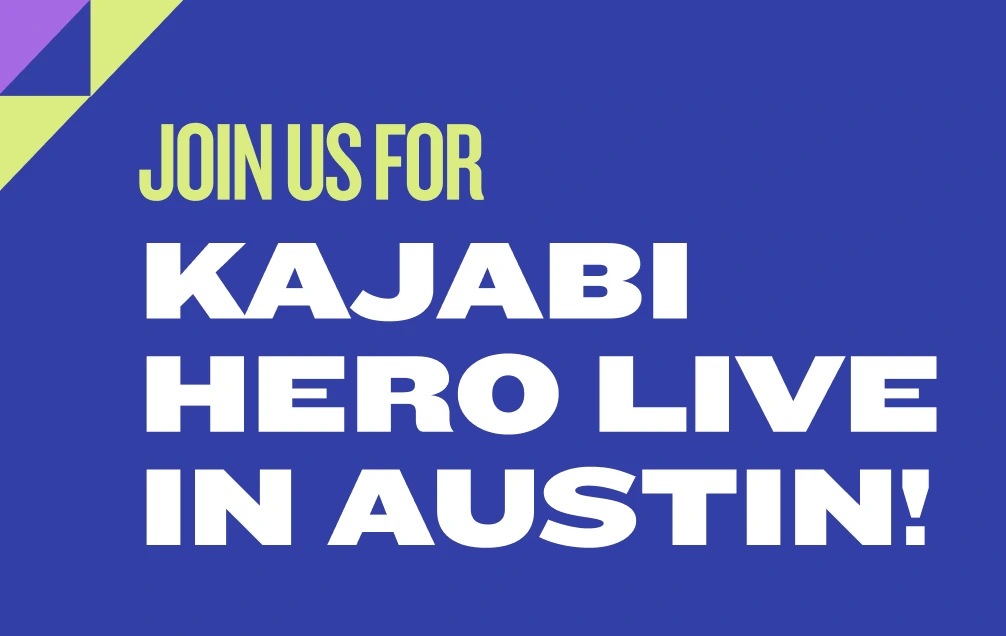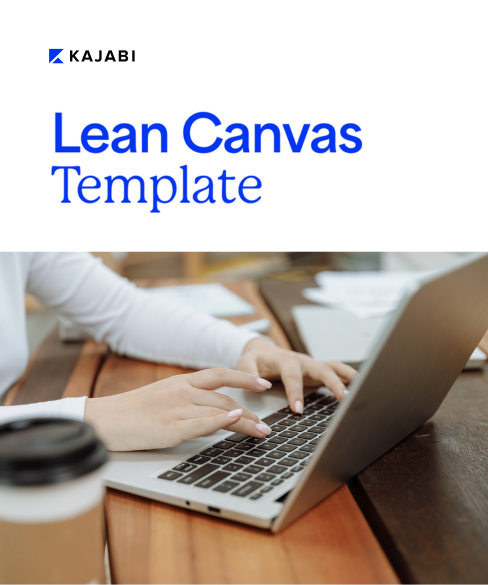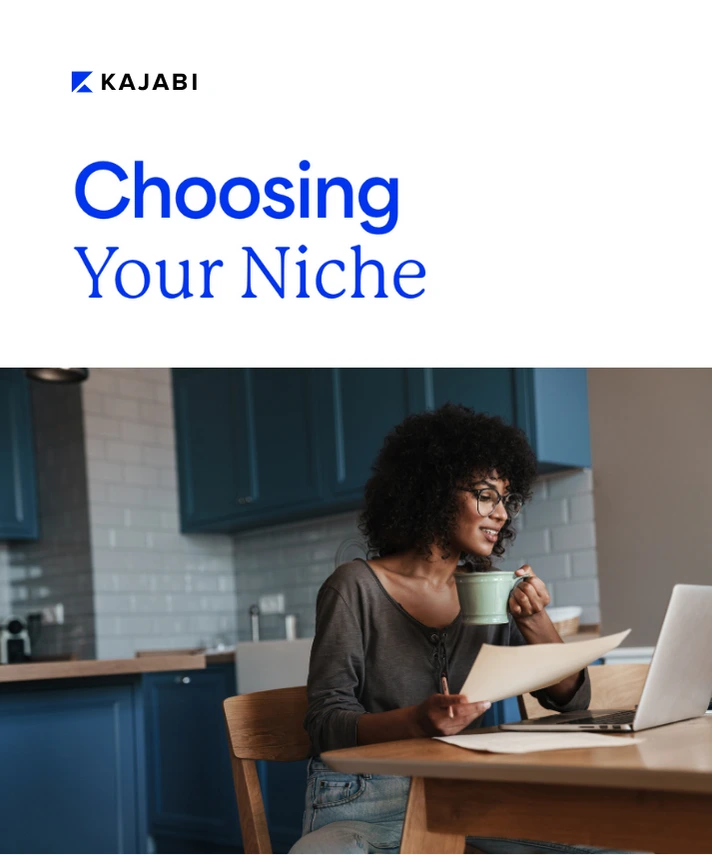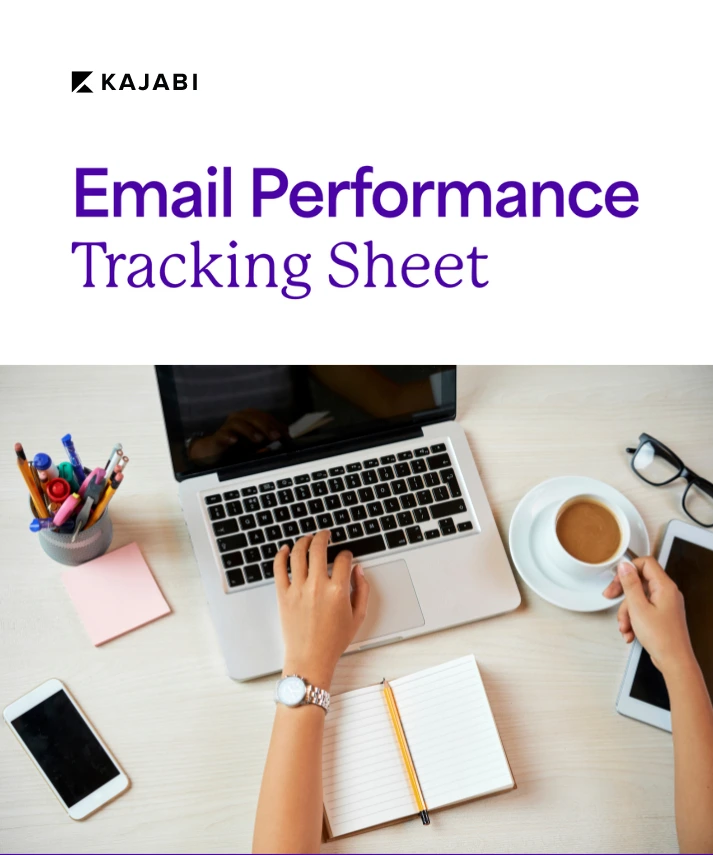Get free expert insights and tips to grow your knowledge business sent right to your inbox.
New businesses often think of branding as something they’ll figure out “someday” — like when they’re better known or when things settle down. But honestly, that’s too late.
Without a cohesive branding strategy, you’ll struggle to grow. The sooner you nail down the full scope of branding marketing for your business, the better.
To help, in this guide, you’ll learn the basics of cohesive branding, with some smart tips for creating your own unique brand. Let’s get started.
What is cohesive branding?
Cohesive branding is more than just your company’s “look and feel.” It’s how you show up and the impression your brand makes on the people you engage with. It’s you, presenting yourself in a consistent way in everything you do, so people understand who you are and what you stand for.
It’s important to incorporate your brand in every element of your business. By creating a unified brand from Day 1, showing up consistently in your website, podcast, newsletter, and products, it’s easy for your followers to recognize anything you create.
You can see examples of major companies using cohesive branding every day. Some of them do it so well, they’ve created a cult following.
Think Apple, with its clean, crisp modern look. It appeals to those who always need to be on the bleeding edge of technology. Or Coca-Cola, which hearkens back to a simpler time, when good friends and good stories were in abundant supply. Or Harley-Davidson, the gold standard for die-hard motorcycle enthusiasts.
Each of these brands is well-known today precisely because of their cohesive branding. They’ve made a name for themselves among their customers and fans because they’re not just a name, they’re a lifestyle.
Coca-Cola will never be known as the hip, edgy choice of youngsters. The one time they tried to deviate from their brand (New Coke, anyone?), it was nothing short of disastrous.
The reliability of their recipe, as they learned soon after, was what kept their customers coming back for more. No one wanted them to “shake things up.” Their customers felt a bond with their favorite cola, and they didn’t want anyone messing with it.
Of course, these are major brands. What about younger brands and startups? Is there still room for a brand like yours to make a a big impact? Yes!
What are some examples of cohesive branding?
Let’s look at three brands that became household names, not because of their loud advertising or pushy sales tactics, but because they showed up in a consistent way.
Airbnb

Airbnb was able to capitalize on something that no hotel was ever able to match, and that’s to “experience the area like a local.” Rather than repeating their brand promise ad nauseum, though, Airbnb let their community of travelers, guests, and renters tell their stories for them.
From surfing in Hawaii to walking the streets of Paris or enjoying exquisite culinary delights in New Orleans, “staying like a local” means that you get to savor the area like a local.
Airbnb built a cohesive brand around that single concept. It worked.
Visit their website, and it could take you a while to identify their brand color. That’s because they’ve put all the focus on you. You’ll see beautiful pictures of “your next getaway.” Or invitations to become a host.
Today, word-of-mouth marketing has put Airbnb on the map. Not bad for a company that started out renting an air mattress in their apartment in San Francisco!
Burt’s Bees

Who would’ve thought that a candlemaker and a beekeeper doing business in a one-room schoolhouse in Maine could transform how we think about natural beauty and skin care?
Burt’s Bees built their brand around an unwavering focus on natural, earth-friendly, good-for-you products with minimal processing. They’re committed to caring for the earth and its people. And that concern is embedded in their website, product labels, and messaging.
On product pages, they focus on the benefits and claims of their products, not just a description. Their brand voice is friendly and inclusive. Instead of asking you to subscribe for updates, they ask you to “join the hive.”

Burt’s Bees is a good example of how much value consistent, cohesive branding can add to your company. Founded in 1984, it was purchased by Clorox in 2007 for $925 million.
The Farmer’s Dog

A relative newcomer to the business world, The Farmer’s Dog was founded in 2014 to create the company they wished existed for their own dog.
Their puppy Jada struggled with digestive issues the first two years of her life. Upon the advice of a veterinarian, they began feeding her fresh, simple, home-cooked food. The effect was instant, and she was like a new pup.
As you might guess, the Farmer’s Dog founder became an advocate for freshly prepared dog food. Today, the company portions and packages human-grade dog food and delivers it fresh, helping pet owners save money while ensuring that their dogs enjoy high-quality food.
The branding itself is as smart and simple as the name. Just from the sound of it alone, you know the Farmer’s Dog has to eat well and eat healthy.
Everything about their branding communicates their love of dogs, from the pictures of dogs with beautiful, shiny coats to the fun headlines like “The Dog Years Are Over” and “For the love of dogs.”
The Farmer’s Dog, Burt’s Bees, and Airbnb are just three examples, but there are plenty more. Think about the shops you buy from, the companies you go to again and again. Those companies likely have a cohesive brand strategy that keeps them top of mind.
By now, you may be asking how you can apply this same scope of branding marketing to your business. Let’s take a closer look at what’s involved.
How do you create a cohesive brand strategy?
A cohesive brand strategy isn’t something you can create overnight, but it also isn’t something that should overwhelm you. You can break it down into a step-by-step process that helps you find your unique look, feel, and voice:
Ask yourself these three simple questions
- Who are you? What’s unique or special about what you have to offer? What makes it different than anything else out there? Why should anyone pay attention?
- What do you do? What do you have to offer? Why is that important?
- For whom? Who do you serve? Why do they need what you have to sell?
These seemingly simple questions are actually quite deep. And by forcing yourself to answer them, you’ll begin to think about what you really stand for and what you want to be known for in the industry.
You can’t just say “great quality,” because quality is abstract. And you shouldn’t say “the lowest prices” either. That’s just a race to the bottom with competitors who may be better-positioned to battle you on price.
Think about how you’re different and how you want to to be known in the marketplace
How you want to be known is just as important as what you want to be known for. Before the iPod, Apple was synonymous with expensive computers that weren’t compatible with the leading software of the time.
The iPod was one of a string of cool, innovative products that created a cult following. Their secret? Infusing their brand into every detail of the product.
Apple rarely creates a new product. But they don’t put a new spin on an old invention, either. They create a new category that only they can conceivably dominate.
Today, Apple is best known for mobile devices that help you stay connected and live a richer life: the iPhone, iPad, and Apple Watch. When you think “hip tech,” you think Apple. That’s the power of cohesive branding.
What about you? How do you want to be known in the marketplace? Does it align with what you want your brand to stand for? Can you create an experience your customers will get addicted to?
Create your brand statement
Your brand statement is a succinct one- or two-sentence phrase that encompasses your mission, expertise, and promise. Think of it as an elevator pitch — it sums up what you do in such a way that it pique’s people’s curiosity and makes them want to learn more.
But more than that, it also makes a clear and concise statement of your values and what you stand for.
Just as Apple stands for modern, cutting-edge technology and Coca-Cola stands for good old-fashioned happiness, your brand statement will be something that stays with your company year after year, decade after decade.
Here are a few examples from successful knowledge entrepreneurs:
- The ultimate online course for selling products on Amazon (The Last Amazon Course)
- All the tools you need to build a successful brand and business (Awesome Creator Academy)
- Find your voice, speak your truth (Voice Body Connection)
Now you: What’s your brand statement? How can you communicate your mission and value in just a few words?
Develop your brand’s look and feel
Finally, there’s your brand’s look and feel. This is what many people consider the “fun” part of building a business: creating a logo, imagery, and icons that build your brand’s personality.
Colors - Did you know that humans are hardwired to perceive different colors in different ways? Color psychology is about using these feelings to create and convey a certain impression.
For example, McDonald’s golden arches are instantly recognizable in nearly every country, and their color scheme of bright yellow and red evoke playfulness, fun, and excitement. Since their biggest seller is by far the Happy Meal, it’s understandable that they want to attract children (and parents) with their cheerful color palette.
Choose colors that accurately reflect your brand and your brand’s personality. Do you want to evoke sophistication or do you want to be known as more zany and creative? Choose your colors wisely!
Fonts - Typography also plays a role in how your business is perceived. Everyone knows Coca-Cola’s old-fashioned stylish script with its calligraphic flourishes. It’s remained relatively unchanged for decades.
Pepsi, on the other hand, underwent a typographic (and logographic) overhaul in recent years to position itself as a more modern alternative. Both brands have drawn a line in the sand, and there are pros and cons on both sides.
Generally speaking, serif fonts (fonts with bars on the base and elsewhere, like Courier and Times New Roman) are generally seen as more old-fashioned and traditional, whereas sans-serif fonts (think Arial and Helvetica) are viewed as more modern and innovative.
Depending on your brand, you may want to convey specific impressions through your choice of font. An antique bookstore would be a perfect candidate for serif fonts, as well as a store that wants to be known for its reliability and culture.
Conversely, many startups are all about the cool, fresh, contemporary vibe of sans-serif fonts. Just like your brand colors, typography matters, so take the time to consider how you want your brand to be represented when choosing the right typographic style for your business.
Logo, imagery and icons - As with colors and fonts, your choice of logo, imagery, and icons form part of your cohesive brand strategy.
Do you go with a more “flat design” styled logo, with simple shapes and colors? Or do you want to get more detailed with your imagery or try something unique and off-the-wall, like isometric icons? Here again, your choices matter.
It’s best to keep all of the symbols and styles together in a cohesive design. Over time, people will associate those colors and shapes with you.
Personality. The full scope of branding marketing includes your personality as well as your colors and font choices.
What personality do you want to associate with your brand? For example, Disney is creative, Harley-Davidson is rugged, Gucci is sophisticated.
No matter how you may personally feel about a brand or its products, these names have undeniable staying power simply because they have personality behind them: their products, their brand, and the way they connect with their target customer all tell a story about them.
Create your cohesive brand
Now that you know how to create cohesive branding for your own company, the next step is to jump right in and get it done.
Of course, you’ll need the right tools to help you present your brand to the world. With Kajabi, you not only have access to a user-friendly, drag-and-drop website builder, but also helpful marketing tools like a blog, shopping cart, email marketing platform, marketing automation system. and more. With Kajabi by your side, you can create a brand that makes a lasting impression on your customers with every campaign you launch.
Join us for live Q&A webinars every day, Monday through Friday. Register today to learn everything you need to know to succeed as a knowledge entrepreneur, including selling products, Kajabi themes, pipelines, webinars, and the Kajabi Partner Program.
Find more blog posts by category:
Create Your Product
Build Your Business
Grow Your Business
Kajabi News
Self-Made














